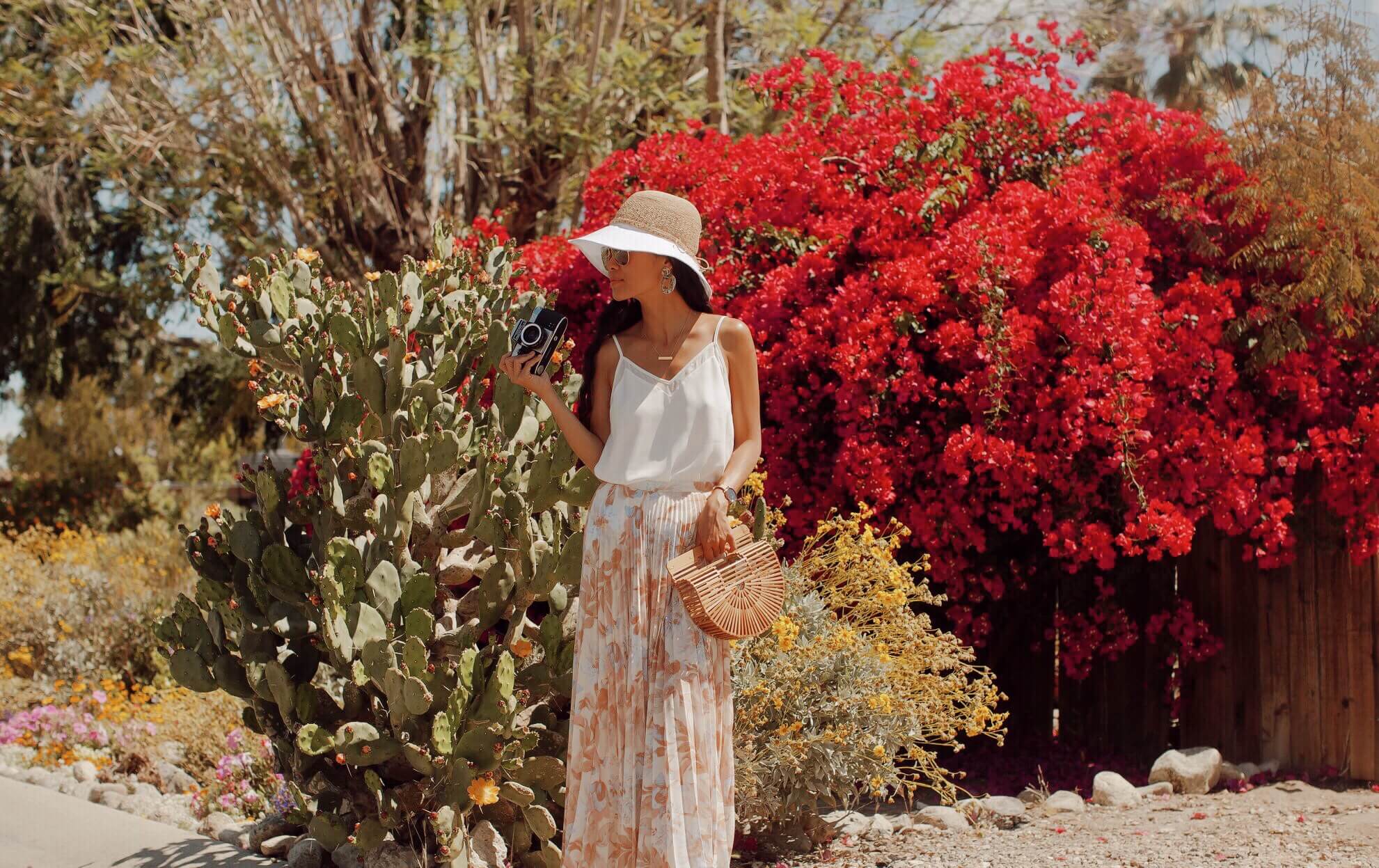
Maximize your leaf peeping with hot spring soaking in the Eastern Sierra
Fall, in California? This state isn’t all warm weather and beaches, California has some amazing fall foliage…While New England wins hand down for the best fall colors, those of us on the west coast can also cash in on this fall favorite. Come September and October, the Eastern Sierra gets dressed up in brilliant fall colors, from yellows and oranges to reds and maroons. This area is known for their aspens, cottonwoods, and willows. Majestic mountains, meandering rivers, gorgeous lakes and high-walled canyons also provide a beautiful backdrop to the blazing colors, creating picture postcard scenes everywhere you look.

Not only famous for their picturesque fall colors, the Eastern Sierra is also famous for their hot springs. They are the result of an ancient volcano’s explosion and mostly concentrate in the area between Bridgeport and Mammoth Lakes itself. All of these hot springs are small pools that are the size of a hot tub or jacuzzi with water temperatures ranging from 95 F to 105 F. Few experiences compare to an autumn soak in the natural hot springs in Mammoth Lakes while soaking in the view of gorgeous fall foliage. To maximize your leaf peeping experience in the Eastern Sierra, I highly recommend you combine it with some natural hot springs soaking. This guide will show you where to discover the best fall colors and hot springs in the Eastern Sierra.
When to Find Fall Color in the Eastern Sierras
As you know, the time period when the leaves on trees start to change and hold color is hard to predict, and when it happens, it happens for a blink of an eye and then the fall foliage season is over. The best time to explore the majestic foliage of the Eastern Sierra is starting from the last week of September to the first two weeks of October. Since the leaves change colors at different times every year, if you can be flexible, the best way to catch the peak, is to be more spontaneous.
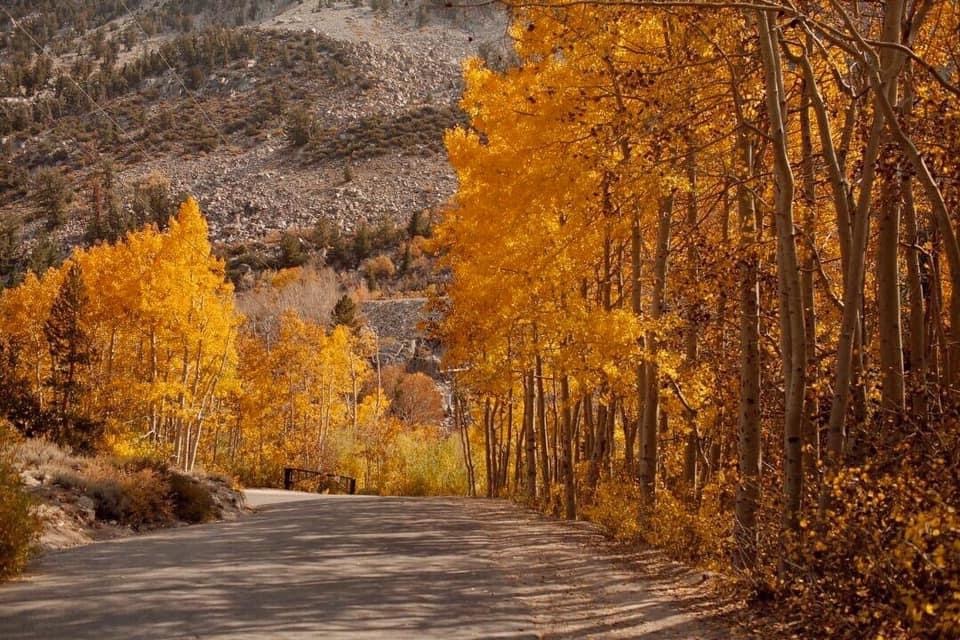
October colors tend to be the most robust so I would recommend you to visit in the middle two weeks in October and adjust the actual dates based on real-time fall color maps and reports.
Where to Find Eastern Sierras Fall Colors
1. BISHOP CREEK CANYON
A short journey of no more than 20 miles west of Bishop on US Highway 168 will take you well into the rugged high country. Bishop Creek Canyon is a visual feast when colors peak in the area.
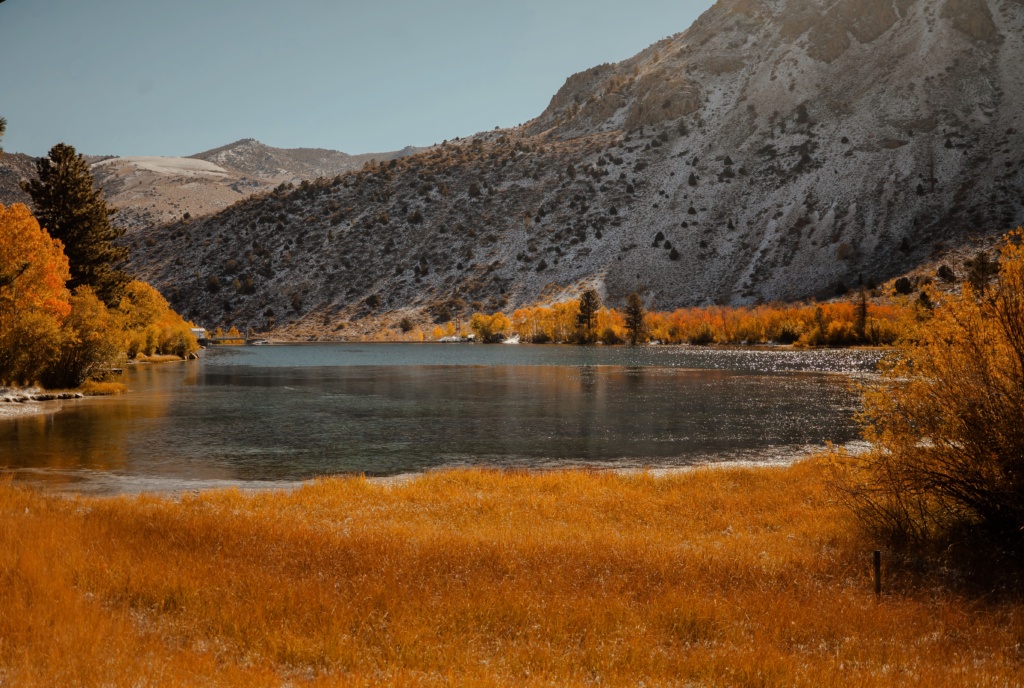
Bishop Creek, just outside of the Bishop area is one of our favorites and one of the best places to see the changing colors of the aspen, willows and cottonwood trees. The gold and orange foliage glisten in the reflections on Lake Sabrina and rivers making this one of the most memorable areas to visit.
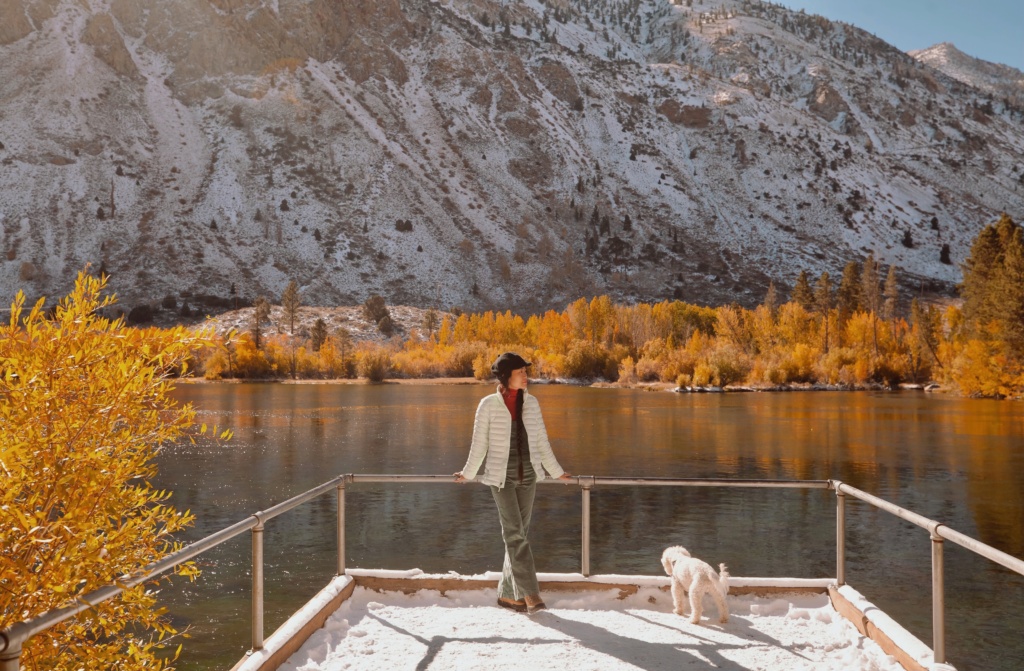
Bishop Creek has three forks, and each fork ends in a high elevation lake. Surrounded by mountain peaks, the lakes offer superb photo ops in any season but more so in the fall.
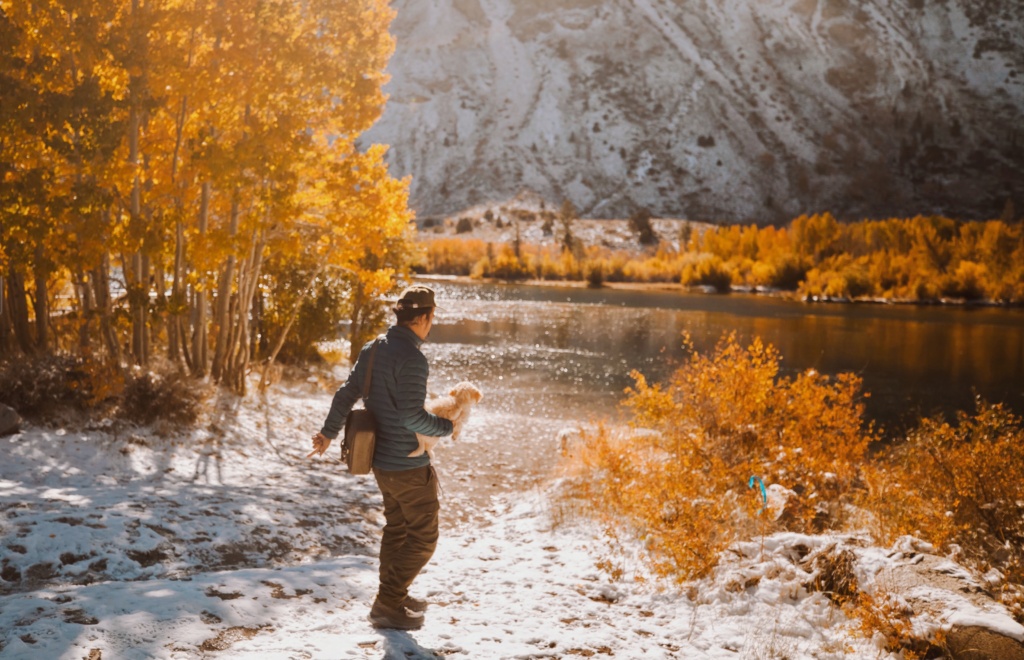
These pictures were taken along the Bishop Creek Canyon. This area got a heavy amount of snow during our visit so we got a very unique scenery – golden leaves on white snow.
2. SABRINA LAKE, SOUTH LAKE, AND NORTH LAKE IN BISHOP
The Bishop area is home to three stunning lakes that are popular fall destinations: South Lake, North Lake and Sabrina Lake. Visit each of the lakes and spend time in the groves that line the roads to these lakes. Exploration on foot from any of the turnouts and trailheads will take you deep into the explosion of color.

Among the three lakes, North Lake is a more coveted photo spot when colors are at peak. There are dense stands on aspen on the far shore of the lake, and behind them, the mighty peaks of the Sierra Nevada rise up, sometimes topped with snow. It’s a postcard view, especially when conditions are right for reflections!
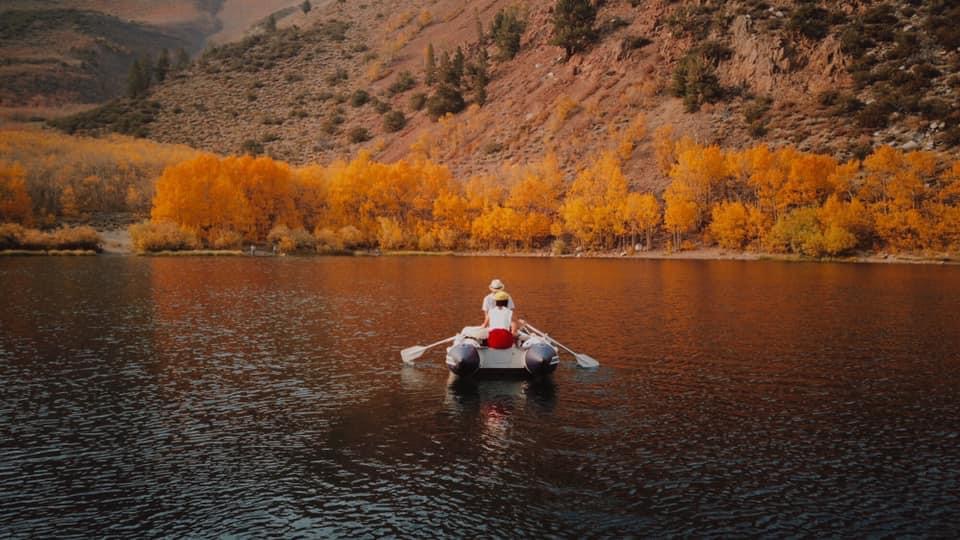
Be warned, though, that getting to North Lake is an adventure. The road changes to dirt in a short distance after you make the turn onto North Lake Road, and progressively becomes very narrow and winding. But the drive led us to the most rewarding scenery.

When we pulled off on the North Lake turnout and began heading up the steep dirt road, the morning light softly illuminated the scene around us. Suddenly, the road passed through a dense grove of Aspens, unlike anything we’d ever seen. It was too sublime that we decided to launch our inflatable boat here.

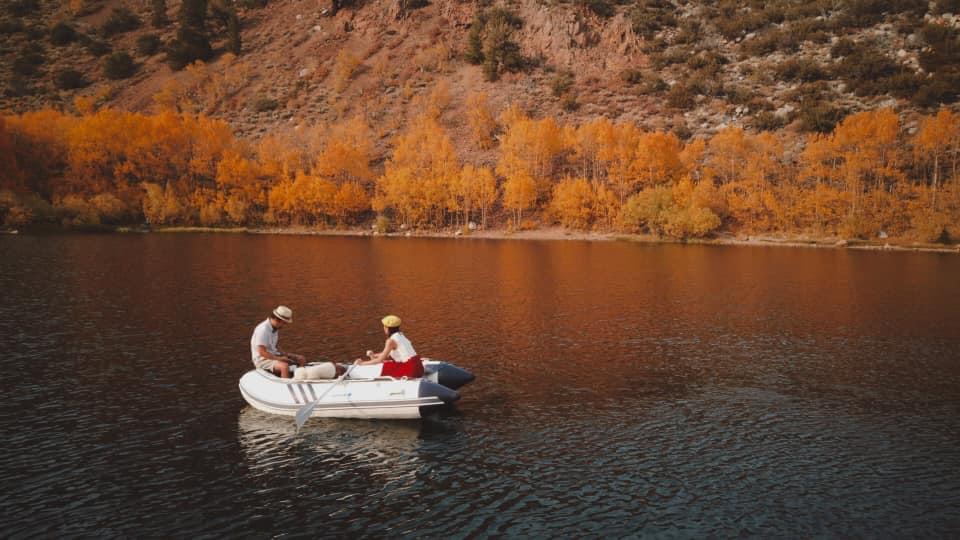
3. JUNE LAKE LOOP
In a region full of stunning scenic drives, the June Lake Loop is arguably the most scenic. If you have the time to do only one detour as you drive SR395, this should be the one! June Lake Loop is the name of the 16 mile road that loops around June Lake.
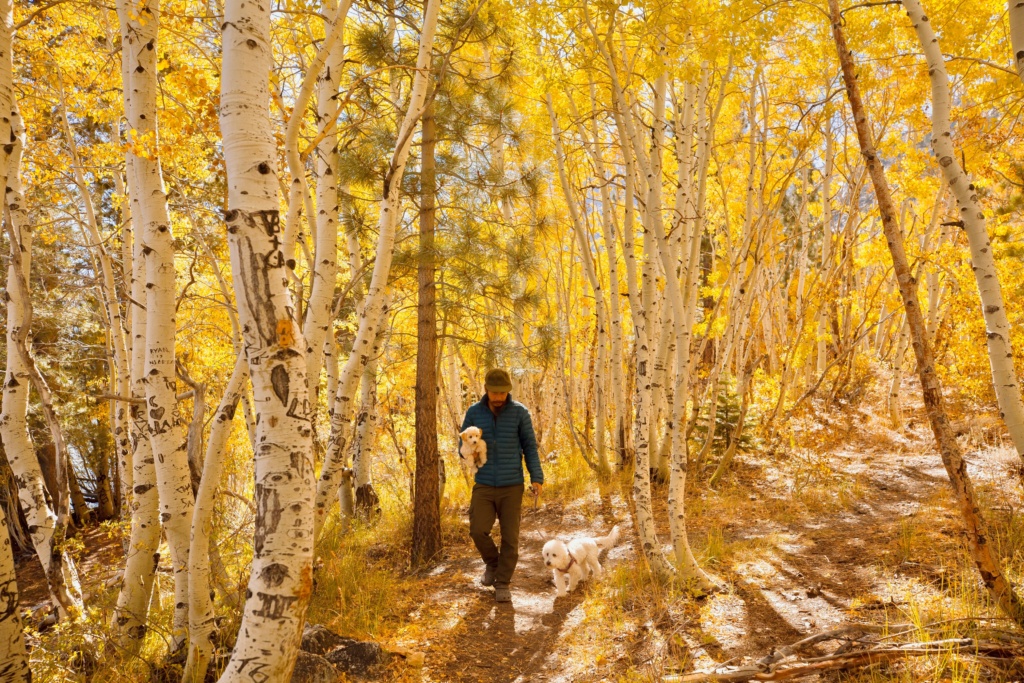
June Lake Loop is beautiful year-round, and locals called it “Little Switzerland.” In the fall months, June Lake is one of the best places to see fall colors. There are 4 lakes along the loop: June Lake, Gull Lake, Silver Lake, and Grant Lake. Silver Lake was my favorite lake on this trip.
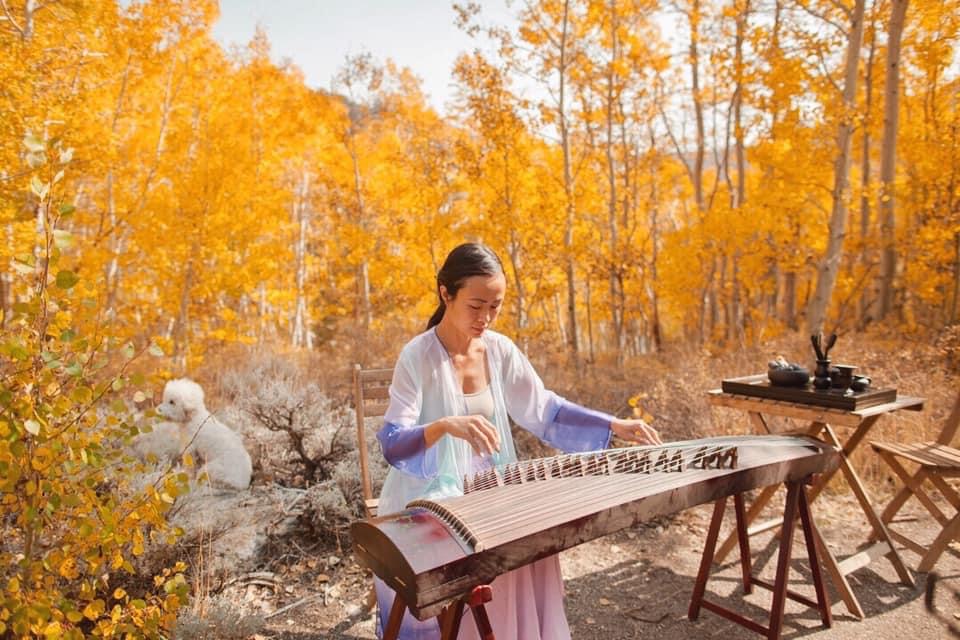
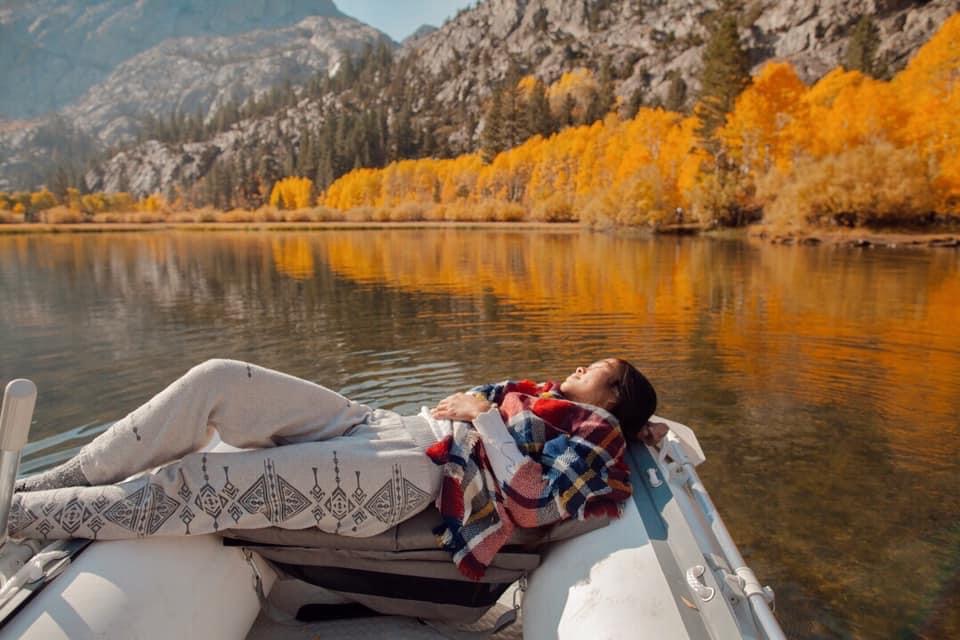
It was pretty easy to spot where to park to experience the yellow alpine trees in Silver Lake. The parking lot was pretty large. Once you park, you can easily experience the different paths through the yellow trees. You can gaze over an endless sea of colorful trees rimming high alpine lakes, their reflections mirrored by deep blue alpine waters.

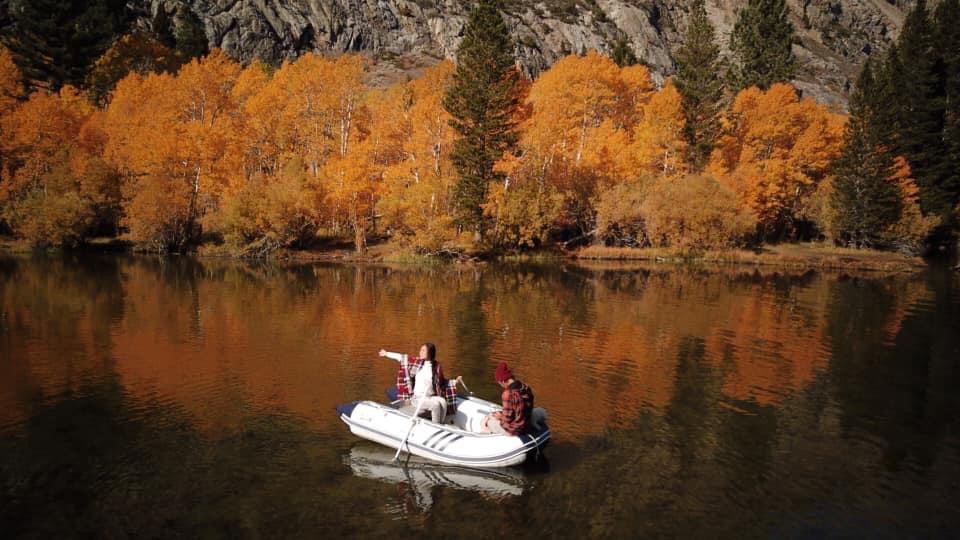
4. CONVICT LAKE
One of our favorite places just off the 395 is Convict Lake. Driving in from Southern California, Convict Lake is about 25 minutes before you reach Mammoth Lakes town. This popular lake is a favorite among locals and visitors alike. The three mile long trail that circles the lake makes it great for all ages throughout the year. Seeing fall colors here can be as quick and easy as hopping out of your car at the parking area.
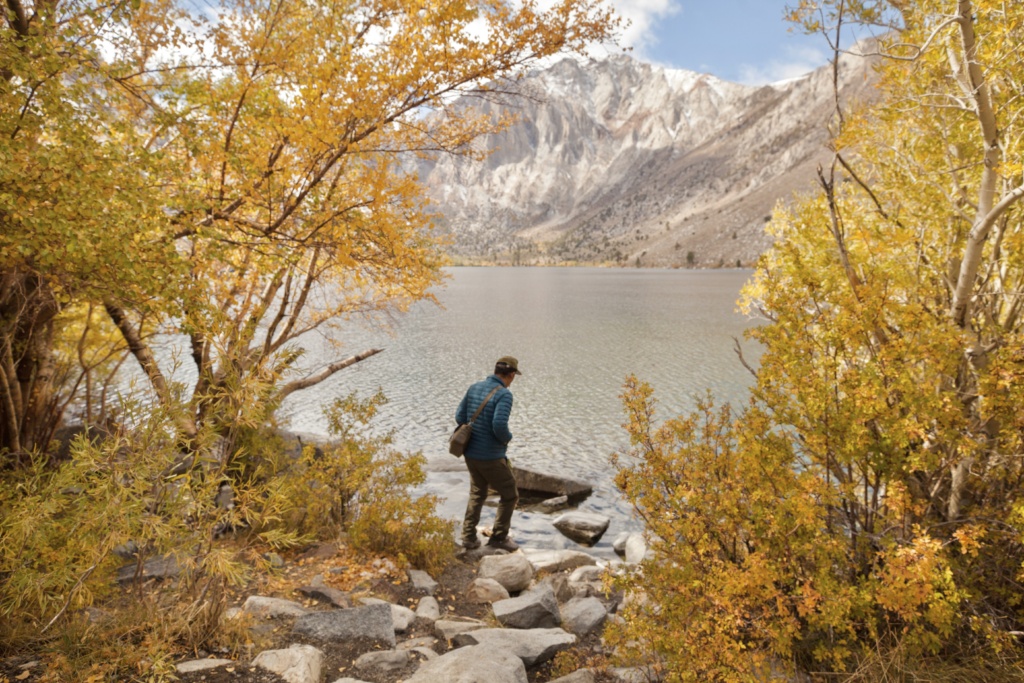
Convict Lake was originally carved out by glaciers, and at up to 140’ deep in some places, it’s one of the deepest lakes in the region. The oblong-shaped lake is filled with water as clear as glass. Fun fact: Convict Lake got its name in 1871 after a group of prisoners escaped from a prison in Carson City and headed here. The sheriff rounded them up and gave the lake the name of Convict Lake.
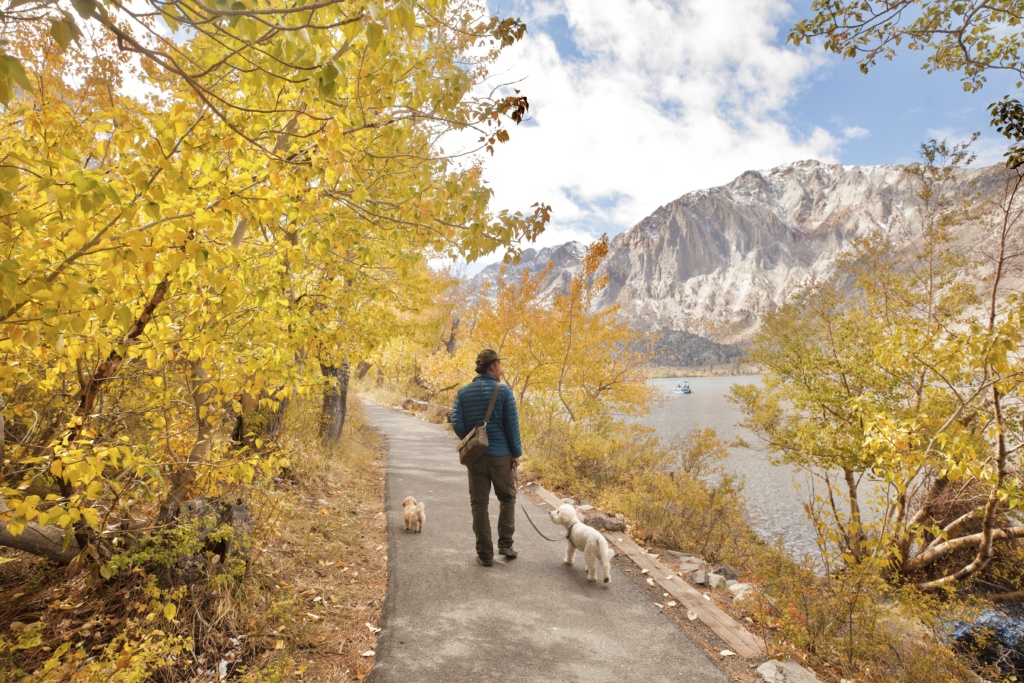
We recommend that you definitely include Convict Lake on your road trip. It has all the charms of any Sierra Nevada alpine lake with hiking, fishing, and camping.
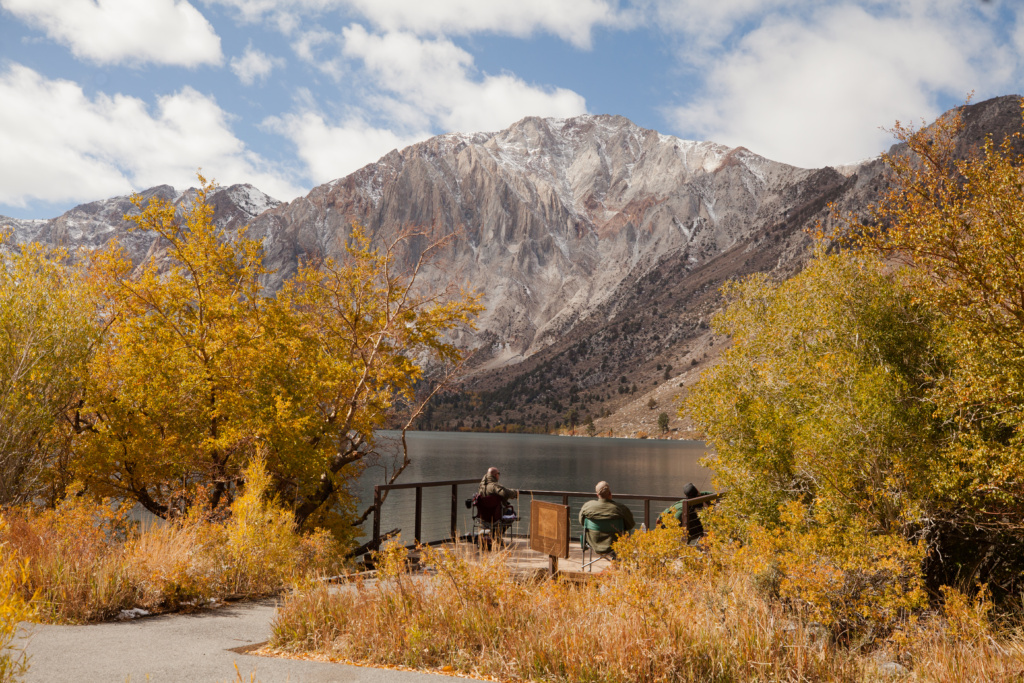
5. HOPE VALLEY
Lovers of fall foliage are likely to be overwhelmed by Hope Valley, an unspoiled region located about a half-hour drive south of South Lake Tahoe.
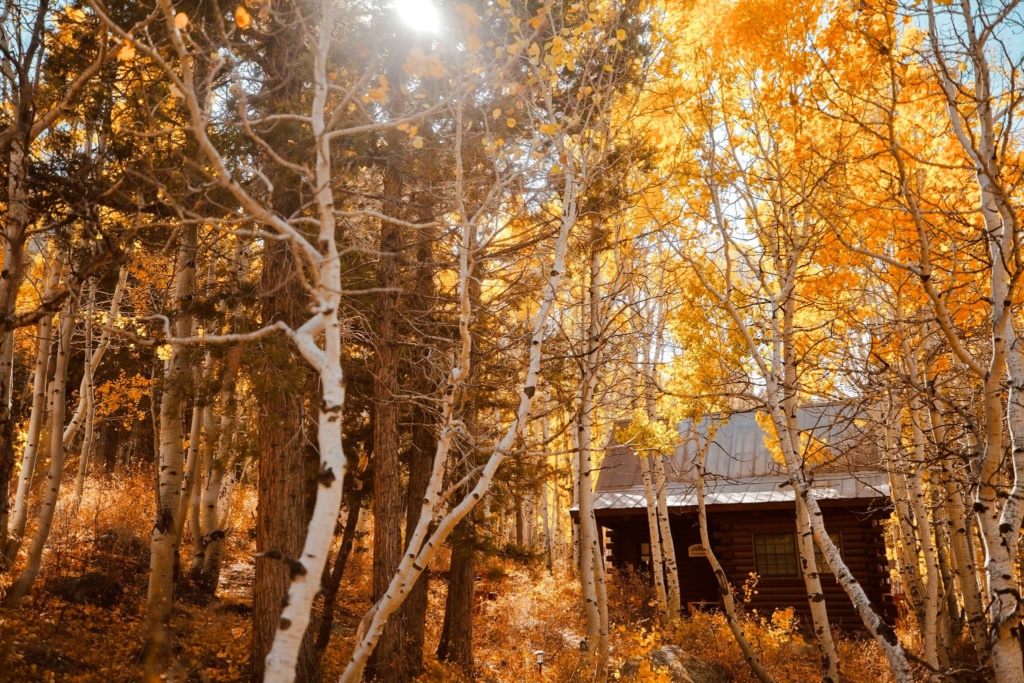
Every fall around mid September Hope Valley comes alive with vibrant aspen colors of yellow, orange and red set against the dark green of the surrounding forest trees. It’s well worth the drive to see these quaking aspen turn color as fall sets in.
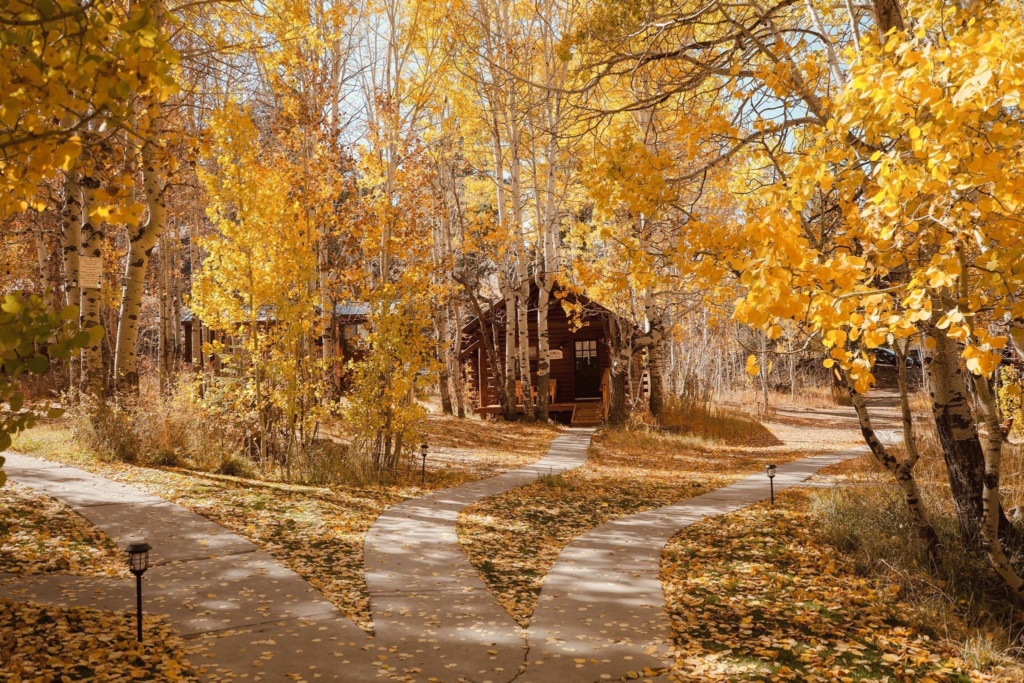
Hope Valley isn’t a town with full services, it’s just a valley with a general store and most of the fall colors can be easily spotted either on the main road or from the main road. You’ll find all the best leaves on HWY 88.
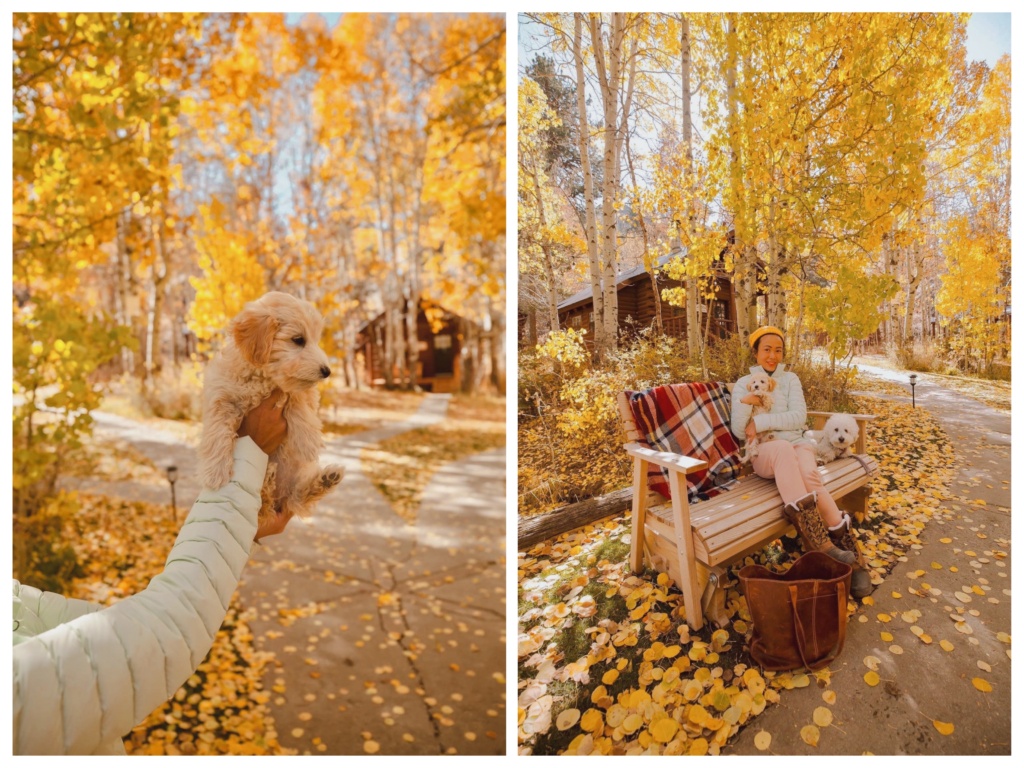
As you’re driving West, keep an eye out on the right side of the road for a little brown cabin that’s tucked right under a bunch of orange, yellow and red trees. This is a popular spot to pull over for a photo in Hope Valley.
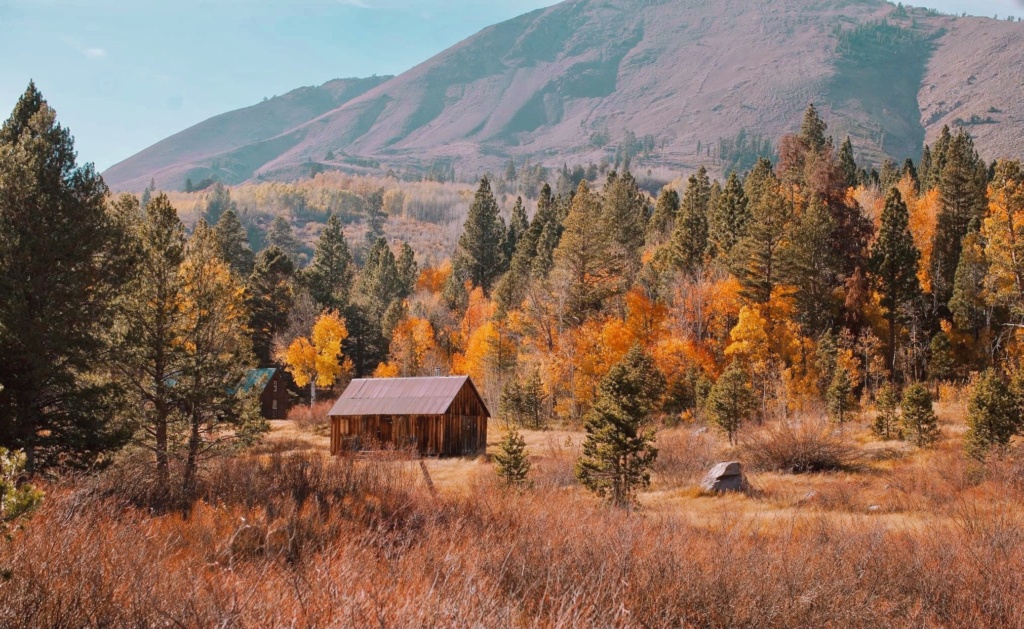
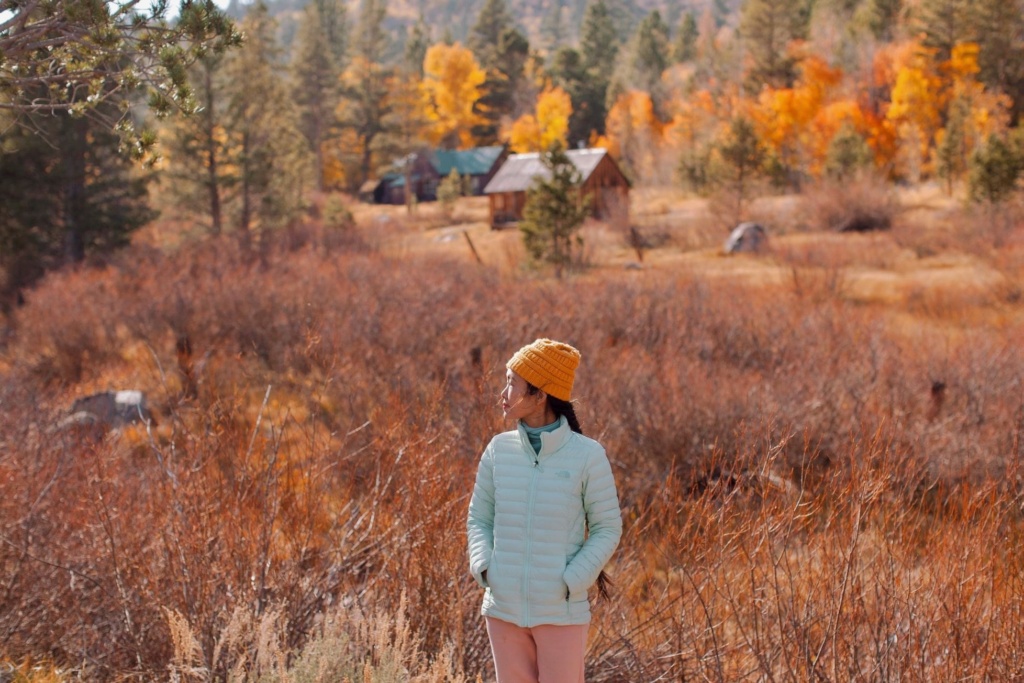
Where to Find Eastern Sierras Natural Hot Springs
There are several active natural hot springs near Mammoth Lakes, California, which are the ideal place to unwind for travelers passing through HWY 395. These hot springs are perfect to decompress after a long day of hiking and leaf peeping.
1. BUCKEYE HOT SPRING
After days of hiking and leaf peeping, we decided to take it slow and explore hot springs in Bridgeport area. Near the town of Bridgeport is Buckeye Hot Springs that is a bit secluded on a hillside.
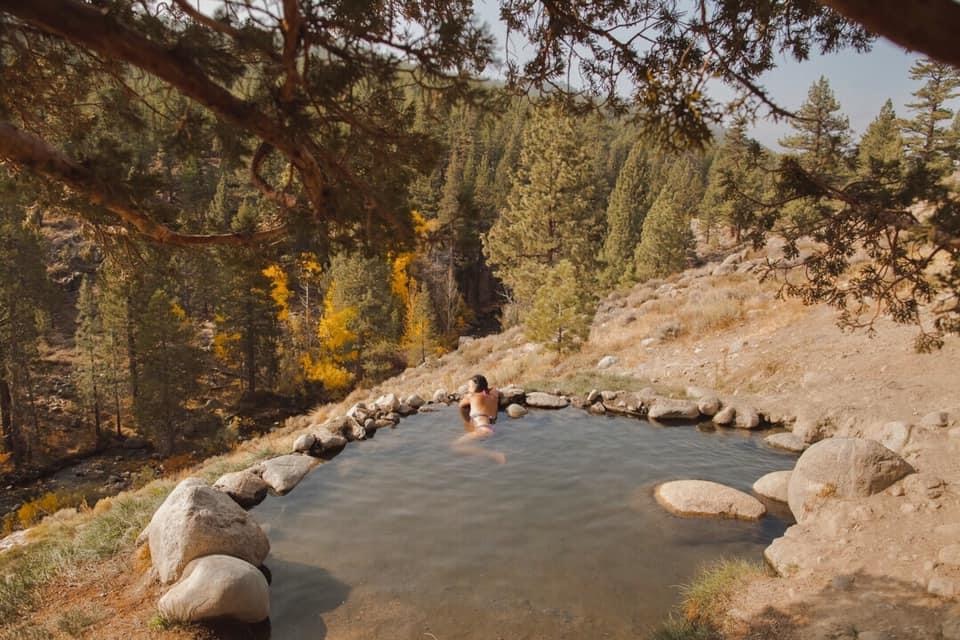
There are three pools that you can access via a short but steep hike down to the creek and one pool on top of the hill. These pools are fed by the constant flow of hot water that pours down from the springs above. The sound of the Buckeye creek relaxes the soul as the warm water relaxes the body.

When the heat becomes too much, take a quick hop over the rock walls and plunge into the creek to cool off and prepare for another round in the warm pools.
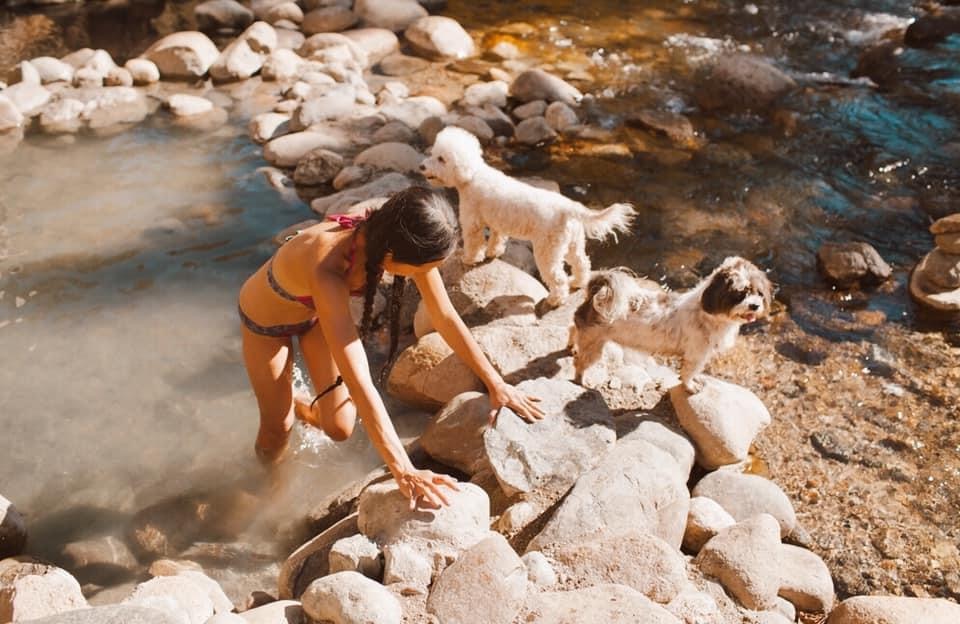
This is a truly beautiful place to soak and enjoy the beautiful view of fall foliage.
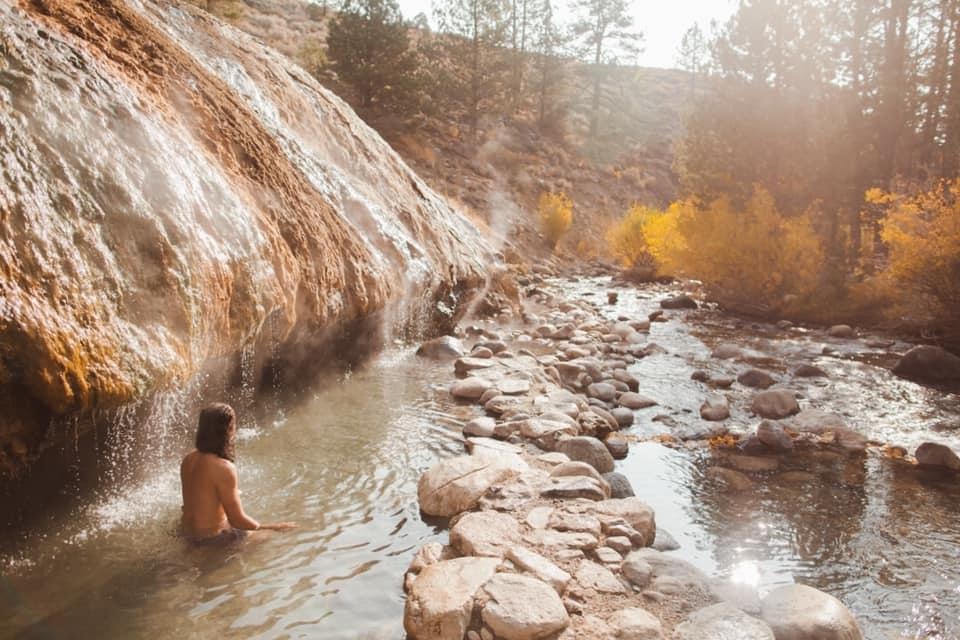
2. TRAVERTINE HOT SPRING
Travertine Hot Springs, outside Bridgeport, is about an hour from Mammoth Lakes on the east side of Highway 395. Located a few miles down Travertine Road/Jack Sawyer Road (the two roads conjoin), these pools are one of the local favorite hot springs. Despite it being a dirt road, the road is well maintained and easy to get down in a low clearance vehicle (when it’s dry).
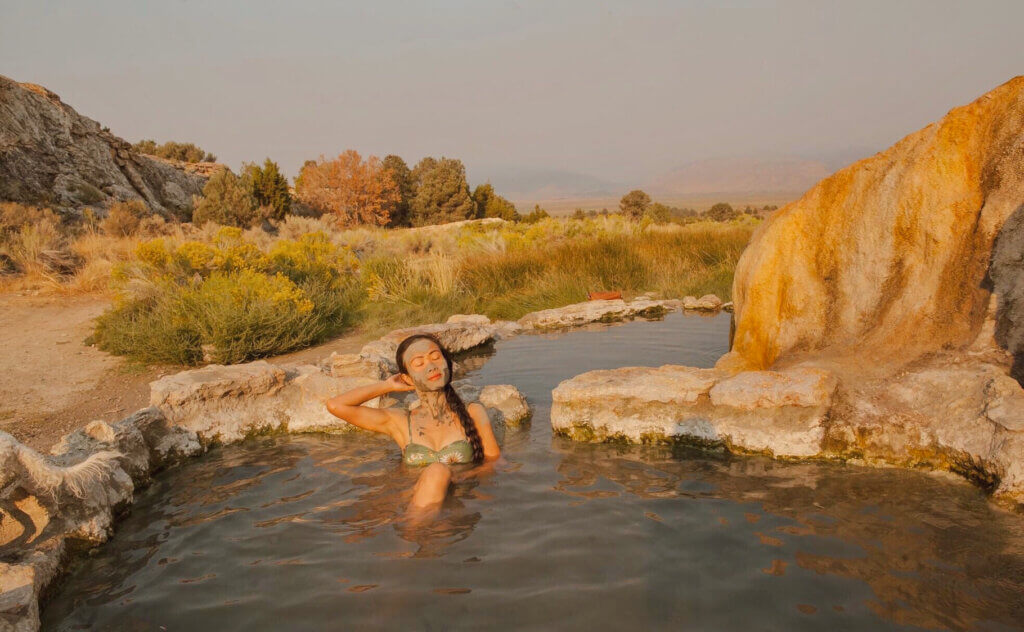
Long relished for their proclaimed healing powers, it is believed that the Travertine Hot Springs have been visited by people for over 10,000 years! One of the most unique things about these pools is the travertine deposits. Travertine is a type of limestone that makes beautiful formations around the hot springs. Mineral rich thermal water runs down a crack in the travertine rock before collecting in the rock pools below.
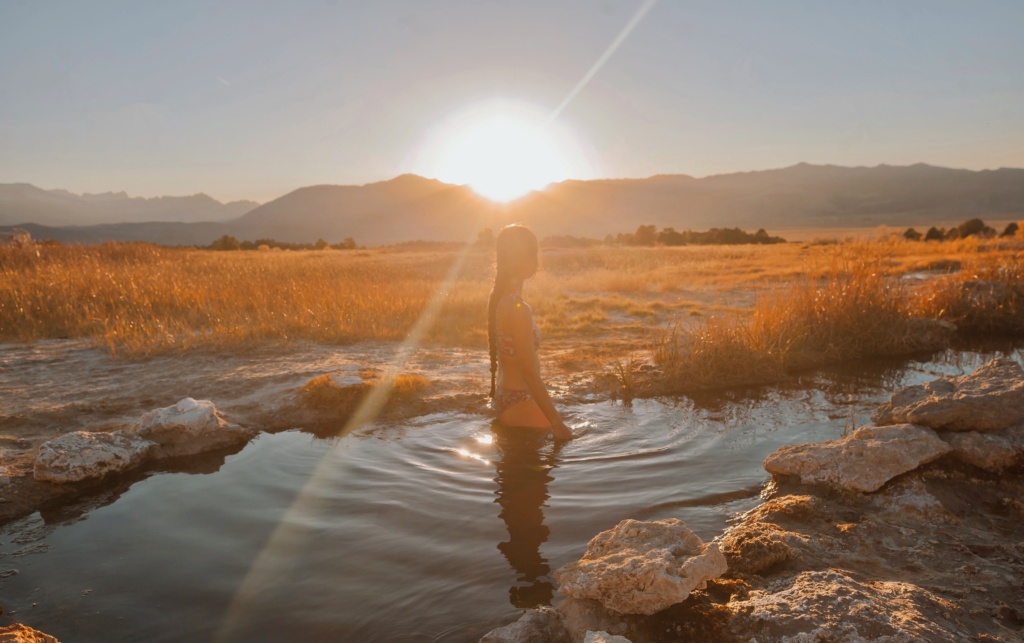
There are three small, fairly rustic springs at Travertine and one larger cement pool, all with varying temperatures. However, many visitors don’t realize how many secret hot springs lie beyond the main pools! If you know where to go, your chances are very good at finding a hot spring to have to yourself.
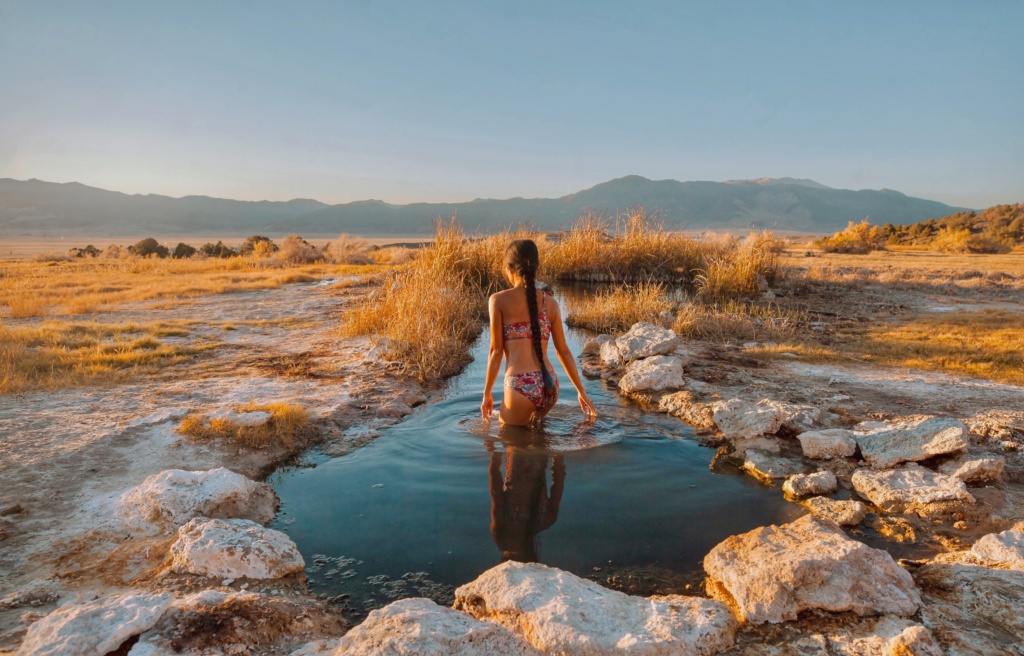
3. SHEPHERD HOT SPRING
The ease of access makes Shepherd Hot Spring one of the more popular Mammoth Hot Springs. Conveniently located right next to the parking lot, reaching the tub requires no walk at all. In addition, the roads to Shepherd Hot Springs are easier to navigate than most of the others in the region. The only downside to choosing Shepherd tub is that it is the smallest and can only hold about 6 people.
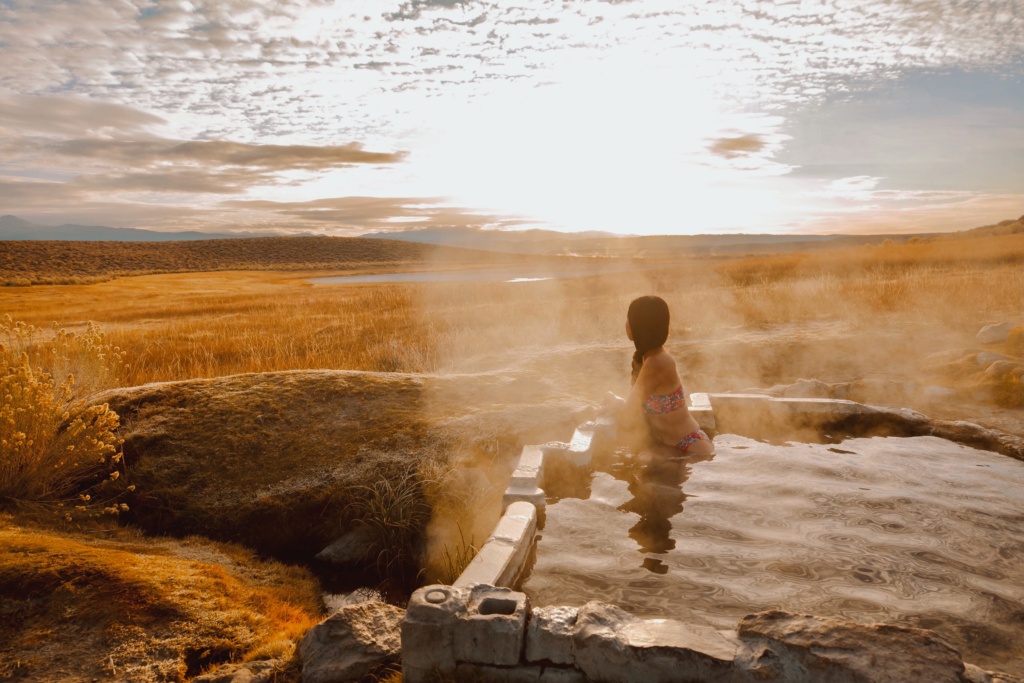
It is a cement pool with water piped in from a nearby spring. Soakers are able to adjust the temperature of the pool via a single valve. It also has ledges built into it for comfortable seating. And like all the springs in the area, the view of the Sierra Nevadas looks quite epic.
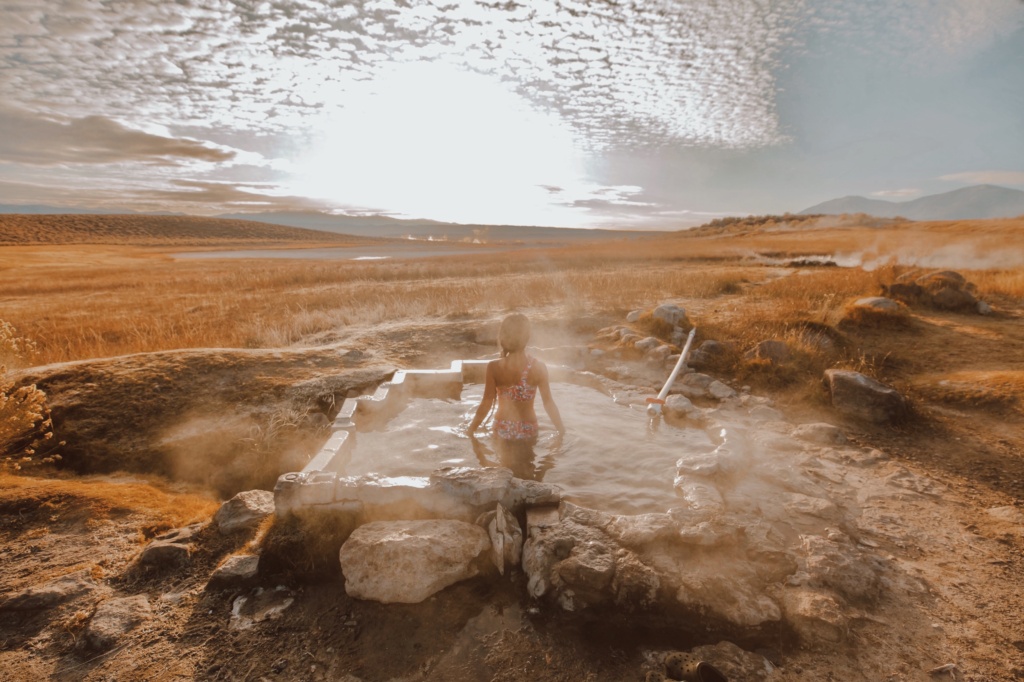
4. WILD WILLY’S
Only a few miles south of Mammoth lakes, Wild Willy’s is one of the largest and most popular of the area’s hot springs. There is one large main pool with smaller pools and the well known heart-shaped pool. These two pools can fit around 30 people.

The springs are about a 5-minute walk from the car park (approx. 0.25 miles) along a very accessible boardwalk and well-maintained gravel path. As it is the most popular hot spring in Mammoth Lakes and so accessible, it can get a little busy.
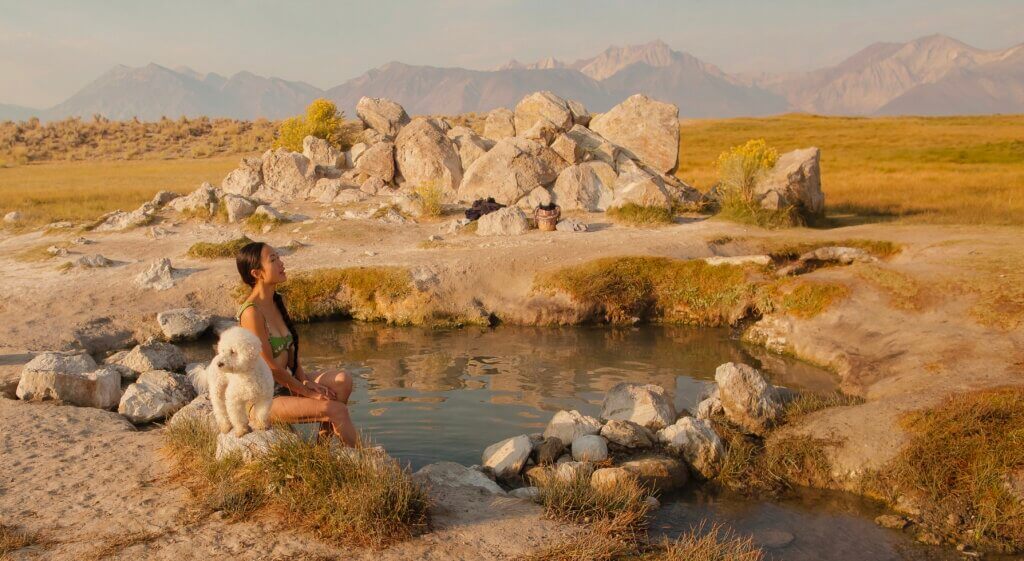
5. THE ROCK HOT TUB
The Rock Hot Tub is a shallow pool that comfortably fits about four people. The temperature may feel chilly compared to the other hot springs in the area, as there is no valve to adjust the temperature. This hot spring also stands out from others given its shape looks almost identical to a hot tub!

While this spot is perhaps lacking in heat and space, it has one of the best views of the Sierra Nevadas.

6. HOT CREEK GEOLOGICAL SITE
Although you can no longer soak in these hot springs, which people used to do before they were closed to the public in 2006. The water temperature has become too hot to bath in due to the geothermal activity (It’s so hot that 16 people have died in these waters since 1978)!
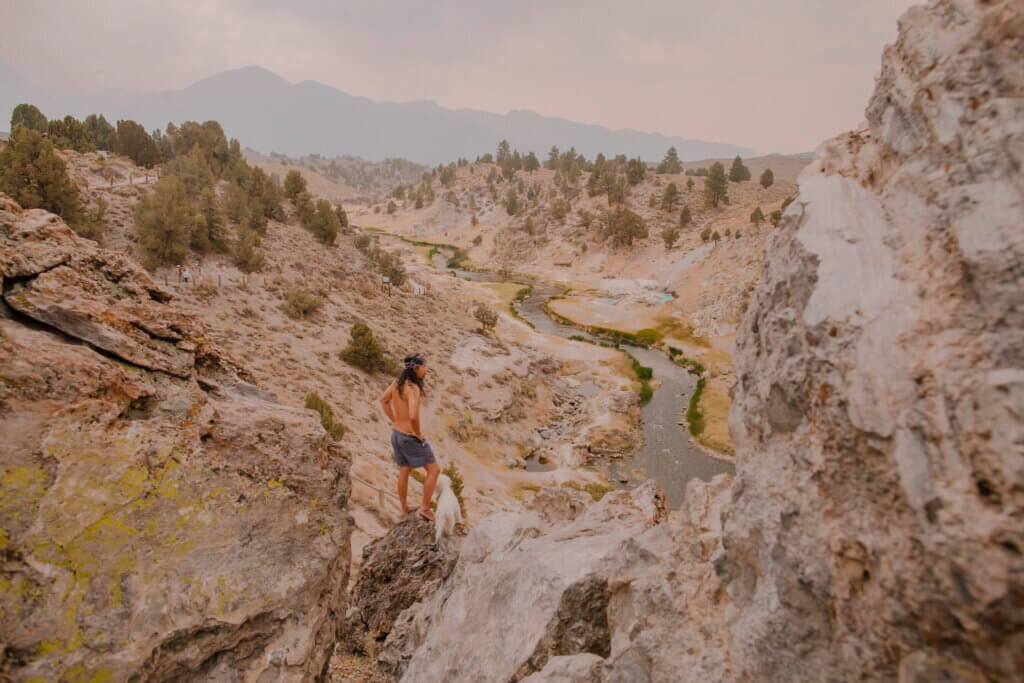
That said, it’s still a super neat area to visit. At Hot Creek Geological Site, you can see boiling water and fumaroles (boiling vents). The main feature is two turquoise blue pools at the bottom of a stream drainage. Don’t miss Brees Lookout for perhaps the best view of the Geological Site. From this viewpoint, you get an almost birdseye view of the snaking creek below.
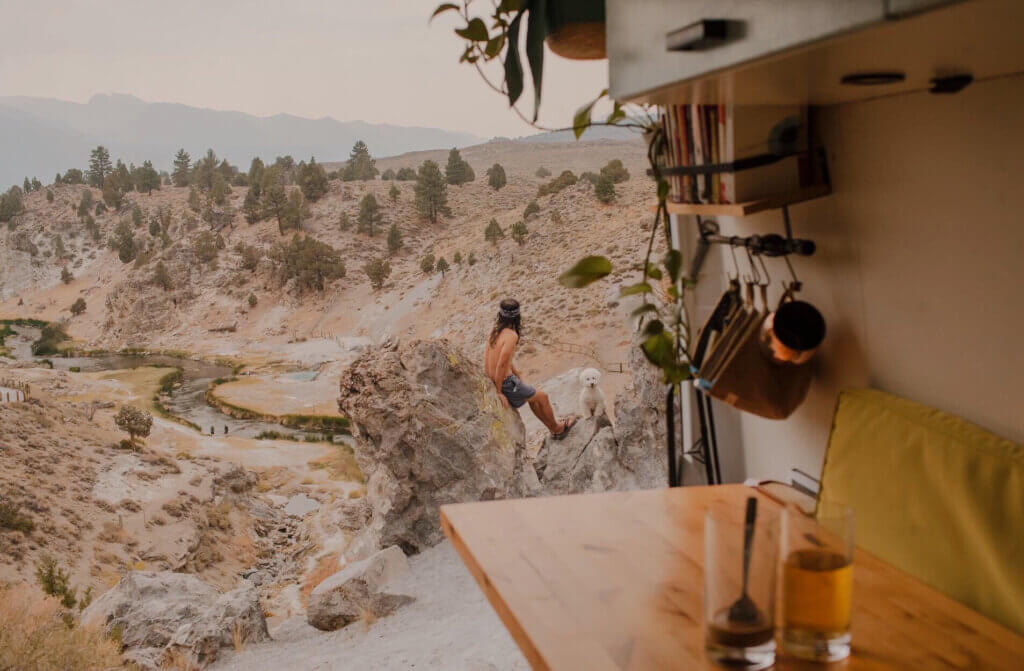
The Eastern Sierras are quite a revelation. And while you can visit anytime, fall colors in the Eastern Sierras really bring the landscape to life. If you are like me and try to bring a little bit of fall foliage into your southern California autumn, head up the 395 where you can experience the beauty of fall from Bishop to Mammoth Lakes and even further north to the South Lake Tahoe area
I hope you enjoyed this in depth guide to finding fall foliage and hot springs in the Eastern Sierras! Please make sure to pin, save or share to access later.

